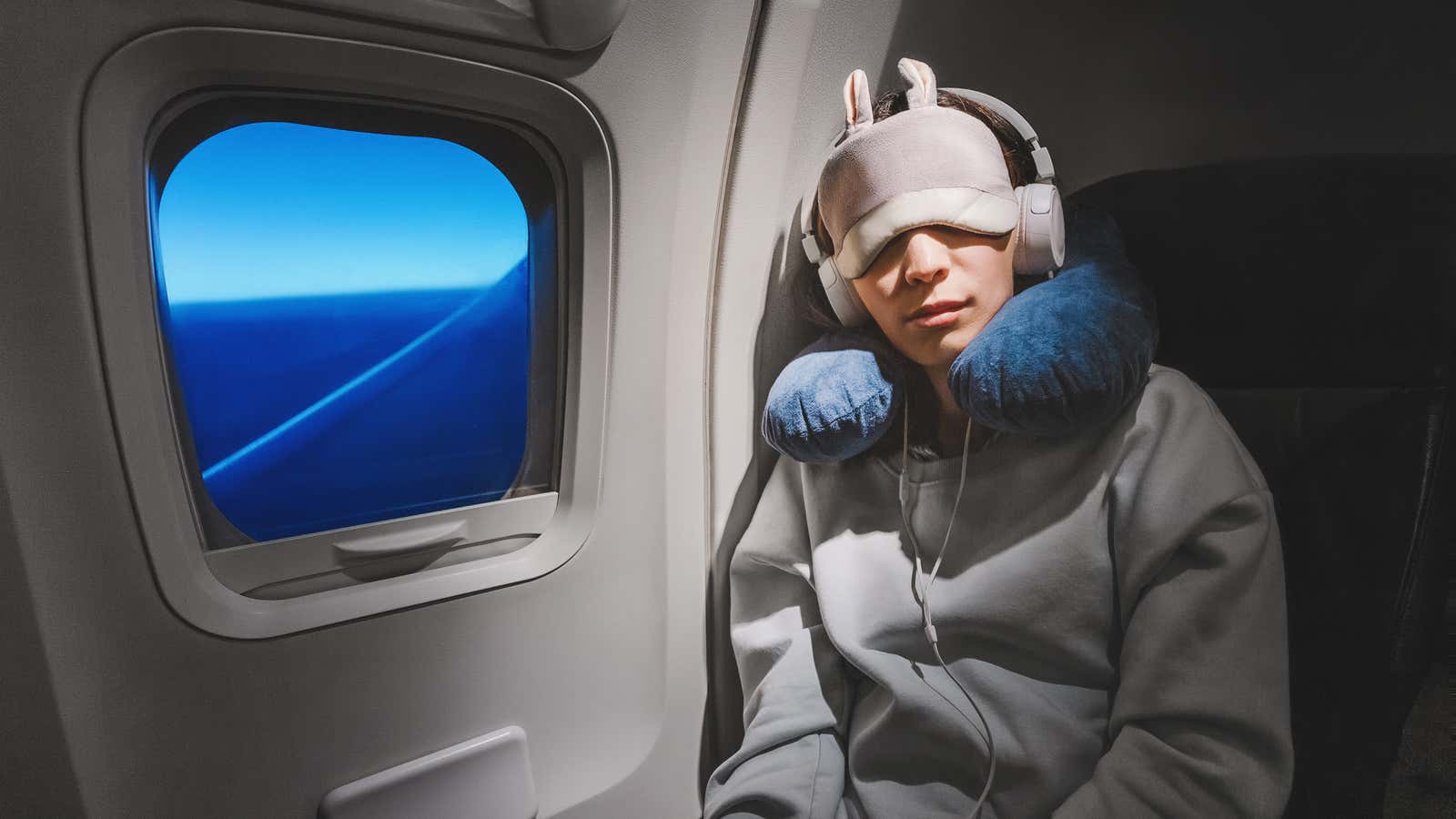How Not to Sit Next to a Crying Baby During a Flight

Back in September, Japan Airlines made headlines that “baby badges” were added to some seat maps on flights, meaning small children would sit in those seats, a change designed to help other passengers find seats further away from these babies on flights.
And while American Airlines dared not make this change, you may have wondered from time to time if you could avoid sitting next to an inconsolable baby during a flight. After all, when you’re tired and flying early in the morning, the sound of chilling screams can keep you awake for hours.
And, well, we have a few ideas on how to approach this issue, although we should preface them by mentioning that crying babies are loud . Whether you are in first class or in the back of the plane, you will hear them. However, this tip comes in handy if you need a small buffer between you and the crying baby in question. (Let’s also remember that parents and kids still deserve the same respect as any other traveler on flights; after all, a crying baby is probably far more upsetting to their parents than they are to you.)
Anyway, here’s one tip that might come in handy: If you want to reduce the chances of being sat next to a crying baby, first, consider reserving a row at the exit whenever possible. Children under 15 years old are not allowed to sit in this row. (Additional fees may apply to booking an exit seat, so you will need to consider whether you are willing to spend a little extra money on a simple quieter flight option. Otherwise, booking behind or in front of that row may also work in your favor.)
Another tip to consider is to avoid reserving a seat near a bulkhead or wall on flights. “These partitions, technically referred to as bulkheads, are the only places on the plane where parents can safely secure the baby’s bassinet, and so this is where most babies under one year old will be,” said Annie Kingston. Stewardess, wrote for travel site Oyster . Some airlines offer bassinets for free, especially for bulkhead rows. (For example, Delta operates some of its international flights, but there is no single policy for all flights. For this reason, this will vary from airline to airline.)
Not sure where a row of bulkheads are on your flight? Recheck your seat map with SeatGuru’s map for bulkhead rows and remember to reserve your seat a few rows back or ahead. ( Here’s our guide to bulkhead seats.)
But what about those older, crying babies who don’t need a bassinet? Well, if you want an overall quieter flight, you can simply opt for red-eye instead of daytime flight. Chances are, these babies fall asleep better at night, which can improve the overall quality of your flight.
And if the situation becomes hopeless, and we mean despair , you can even ask the flight attendant to provide another seat, provided that there is free space. (On the FlyerTalk forums, one user complained about their experience of flying on an American Airlines flight due to a baby crying; in response, the airline suggested that the passenger could speak to the flight attendant for an alternative arrangement.)
And if that doesn’t work, well, ask them for a spare pair of earplugs so you can at least endure the screams a little more calmly.